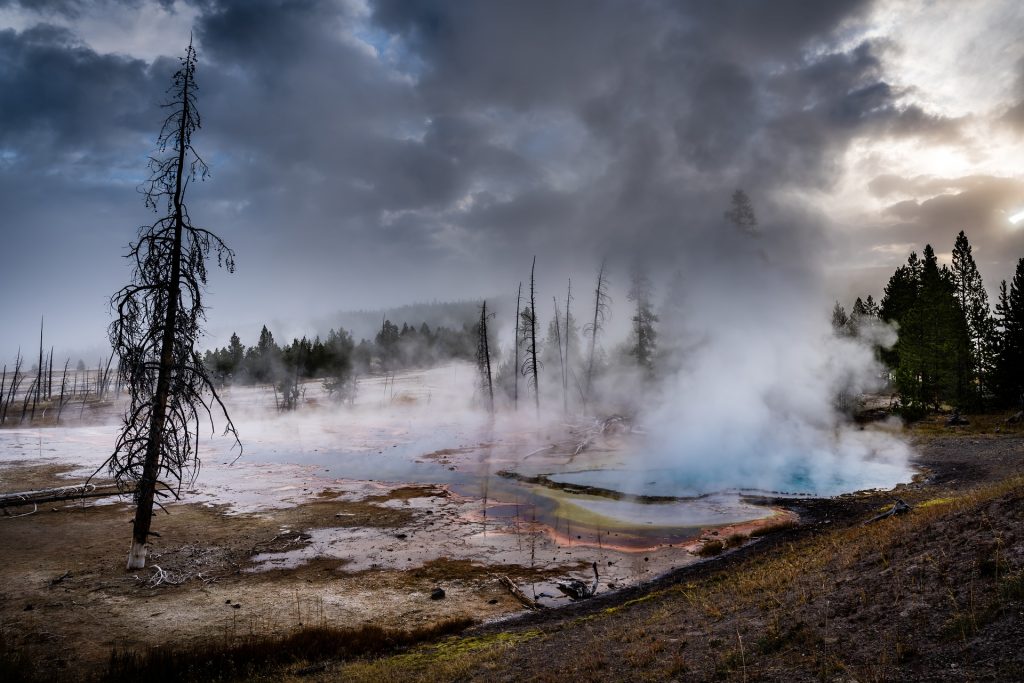Quick bullets
- Geothermal energy is generated by drilling wells into high-temperature water or “hot rock” reservoirs and using the hot water or steam to turn a turbine.
- Geothermal energy has the smallest land surface footprint of any renewable energy source, aside from nuclear power emissions.
- Electricity generation by geothermal energy does not produce significant carbon dioxide.
- Potential environmental threats from heavy metal contamination must be considered and mitigated.
Introduction
Although geothermal power has a range of applications, this paper primarily focuses on utility-scale use for geothermal power plants, and does not address smaller scale geothermal heat pumps like those used to heat and cool buildings.
Geothermal energy comes from deep earth heat that remains from the formation of the planet, as well as ongoing radioactive decay inside the earth’s mantle. The high temperatures form magma, which heats surrounding rock in the crust. This natural heat of the earth is most easily available for use when it comes closer to the surface as hot springs, geysers, lava pits, underground hot water or steam reservoirs, and some high temperature dry rock reservoirs. These kinds of conditions are most often found in tectonic plate boundary regions, like the Western United States, as seen in Figure 1 below, or in geologic “hot spots” of geothermal activity like Hawaii.
How it Works
To produce power from a fluid-filled geothermal reservoir, a few conditions must exist: porosity, which allows a fluid to be collected in the rock; permeability, which allows the fluids to migrate throughout the rock; and the right temperature contained in the rock formation and associated fluids.
To begin with, a well is drilled to access the high temperature water or steam in a geothermal reservoir, then the fluid is piped to the surface, where it is used to turn a turbine and generate electricity. Geothermal energy can also be used to directly heat greenhouses, bodies of water, buildings, sidewalks, and other structures.
Sometimes, if a hydrothermal reservoir does not have the right permeability conditions, fluid injection can open cracks in the rock to improve permeability, in a process that is very similar to hydraulic fracturing used in tight shale for natural gas production.
To read the full report, click here.
To read more about geothermal energy, click here.
